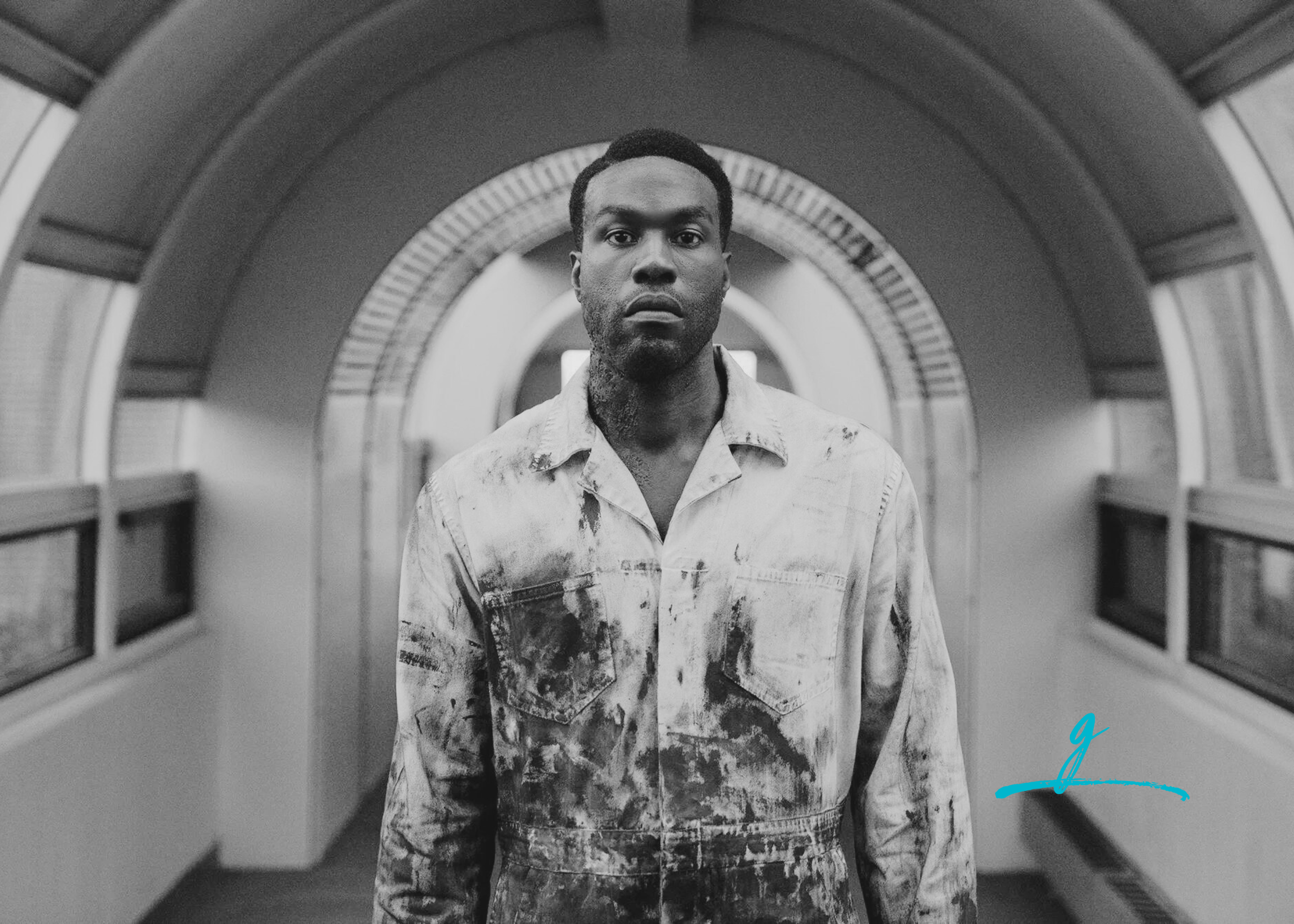Sustained Sensations: The Enigmatic Vibes of Horror Movies
For the past twenty years, if I feel unwell, the kind of unwell that has me firmly planted on a couch instead of working, there are two radically different movie watching experiences that are my go-to: Humphrey Bogart and Resident Evil.
As you recover from the whiplash, let me explain.
Yahya Abdul-Mateen II delivers a fateful performance in Candyman (2021)
Slow burn noirs (The Maltese Falcon or The Big Sleep) and Resident Evil (2002) have virtually nothing in common. I could try to stretch the fabric of reality enough to convince you that both give us a protagonist in pursuit of the truth, a truth that will upend their lives and reveal characters who are not what the appear to be, but let’s not pretend that’s the case.
What they share, to my illness-riddled brain in those moments, is a vibe.
I mention this weird tidbit of my life because, on occasion, movies give us more than just the story. I’m not talking about subversiveness, or hidden reflections or allegories. Nothing that heady.
Just a sensation, an emotion that resonates from the opening scenes and is sustained throughout the film. A combination of sound and score, or lack thereof; of creative framing and cinematography; of allowing the story to unfold in an unusual way. Whatever the choices, the result is one of experiencing something unique.
Vibe is the most apt word I can use, even though it is a word I typically associate with someone who is deeply unserious. Or Young MC. Neither of which is applicable here, so I hope you get the level of discomfort I have using it in this context and won’t hold it against me.
Horror movies are not the ideal vessels for this ‘giving of vibes’. The nature of a horror movie involves the act of being horrified. Jump scares, terrifying revelations and seismic tonal shifts are expected. Rarely can those take place inside a steady emotional state.
Think of the opening credits of the original Texas Chainsaw Massacre. It opens with the creepiest noise - of the camera taking photographs which is so deliciously creepy, but of course, that sensation drops away as we go about the character introductions and placing people in harm’s way aspect of the movie. When the horror ratchets up, it isn’t creepy at all. It is raw and brutal.
One shared element for horror films that can sustain a vibe, is patience. Patience with the pacing of the story. Patience with movement and music. Offering the opportunity for us to sit with what is happening, to look around and take it all in.
Here are six horror films that carry this sensation from start to finish.
The Melancholy of It Follows
On the surface, this movie shouldn’t be as haunting as it is.
There is a version of this film that is a straight up teen scream flick, the kind with a young, fresh-faced cast who die off one-by-one after having sex. Thankfully, there is much more to it.
The cinematic stillness of It Follows contrasts beautifully with the constant motion of the characters.
In It Follows (2014) a movie of constant motion, surprisingly, there are long moments of stillness. Of sitting with the protagonist, Jay as she considers her next move or contemplates whether there are any moves left to make in her young life. The urgency of the problems faced in the physical world meet a pensive reflection on the unstoppable march towards adulthood and an awareness of mortality. The sense of melancholy emerging from the film only adds to its richness. Filmed in a surrealist suburbia, the vibrancy of the images are accompanied by a light synth score yet are most effectively captured in silence, up to and including the final, lingering shot.
The Loneliness of Kairo
As I’ve written about Kairo (Pulse, 2001) and its incredible depiction of loneliness, here I’ll focus on the cinematography and quietness of the film. Beautiful is the word that returns to me, each time I watch or even think about Kairo.
From the opening moments, aboard an unknown ship in the midst of a vast sea, to the way the characters are often framed in isolation, there is a dreamlike quality to Kairo. Similar to how some of the character’s acquiesce to their fate of being forsaken, I am quickly lulled by the muted palette, minimal dialogue and pacing while witnessing an epidemic of loneliness sweep through one of the busiest cities on the planet.
The Isolation of The Wind
I first learned of The Wind (2018) from the documentary Woodlands Dark and Days Bewitched: A History of Folk Horror. In it, the writer Teresa Sutherland shares a story of working on a community garden in Kansas and one of the women alongside her stating matter of factly ‘you know, the wind here used to drive women crazy’.
The vastness of the scenic Kansas backdrop lures you in. Gorgeous. Stunning. Expansive. Set in the 1800s, this is isolation horror doing what it does best. Nature playing and preying on the minds of humans. The romance of the wilderness crashes into the stark reality of the level of self-sufficiency required to merely survive. Of not having anyone to talk to, no one to provide a quick sanity check.
The harsh existence, the waning moments of candlelight in the evening broken up only by the sound of the wind. Relentlessly making its way through the cracks, seams and frames, changing as it does. It is a never ending voice in your ear whispering thoughts you cannot face even in the light of day.
The Fever Dream of The Giant
This trailer captures the nature of the 2019 film, and everything I have to say about it, perfectly. There is a wistfulness. An ambiguity. The dreamlike sense that you aren’t seeing everything, that you’ve been dropped into a conversation or scene midway. While your brain wants to fill in the blanks, it also just floats along with the not knowing.
The Giant Trailer
Remember, this is not a recommendation forum for great horror movies. There is a good deal lacking with the film itself, but it is a wonderful example for this list.
From the first scene, the fever dream nature rings true. Set in Georgia, when summer days are too hot to do much more than lazily watch the passing of time til summer’s end; and the nights bring no relief. You can smell the pungent sweetness of jasmine, feel the stickiness of dried sweat and lose yourself in the foggy familiarity of a dreamscape that is at once welcoming and warning us with its embrace.
The Tension of Knock at the Cabin
How does Shyamalan do it?
We all have different track records with our appreciation or his films. He singlehandedly assumed the mantle of ‘The Big Twist’ with Sixth Sense and has continued to deliver on it, to various degrees of success. My favourite of his films are the ones that aren’t all that scary, including Unbreakable. At his best, he is a great, original storyteller. So choosing a known text seemed like an odd choice, especially one as grim as the plot of the book. Luckily, he changes key points for the film. I purposefully mention this as a few people I know who read the book, avoided the film thinking they were going to witness the worst parts. See the film. He makes the right changes.
Back to my question. How the heck does he do it?
From the moment Dave Bautista’s character arrives onscreen, 3 minutes and 45 seconds into Knock at the Cabin, until the very end of the film, there is only tension.
Somehow, the movie starts at a tension level of 8.5/10 and manages to stay there for the entirety. Except for the few times it hits a ten. It shouldn’t work. Movies let us drop our guard, get us comfortable before scaring us with the next big fright. Those that don’t, well sometimes they simply exhaust us, or bore us with the monotony of artificially inflated dread. Knock does neither. And it does it to great effect.
The Fatefulness of Candyman
The flashback sequence at the start of Candyman (2021) tells us this is a story left unfinished. When Yahya Abdul-Mateen’s character hits the screen, taking photographs while exploring and looking for inspiration in the Cabrini-Green neighbourhood in Chicago, the sense of destiny about his fate locks in. Now, to be fair, being a horror movie, we can probably guess the fate of most characters appearing on screen, but this is no short cut to a stereotype or trope.
The approach includes obvious care and attention to detail in honouring the first film, as it begins a slow, steady progression towards the only ending possible. The film gives us the fateful sensation of knowing exactly what is going to happen, yet, we cannot look away. We need to know why. We need to see fate fulfilled. To see for ourselves that you can look left, right or over your shoulder; you can resist, engage, fight or flee; but every single step taken, is always a step closer to the place where destiny wants you to be.
Looking at this short list, I see I may have recency bias rearing its head.
What films have I missed?
Do you enjoy the vibe a film radiates or is this a ‘me’ thing?
Enjoyed this story? Support my writing here, share with your network or subscribe below to receive your weekly update directly to your inbox.



